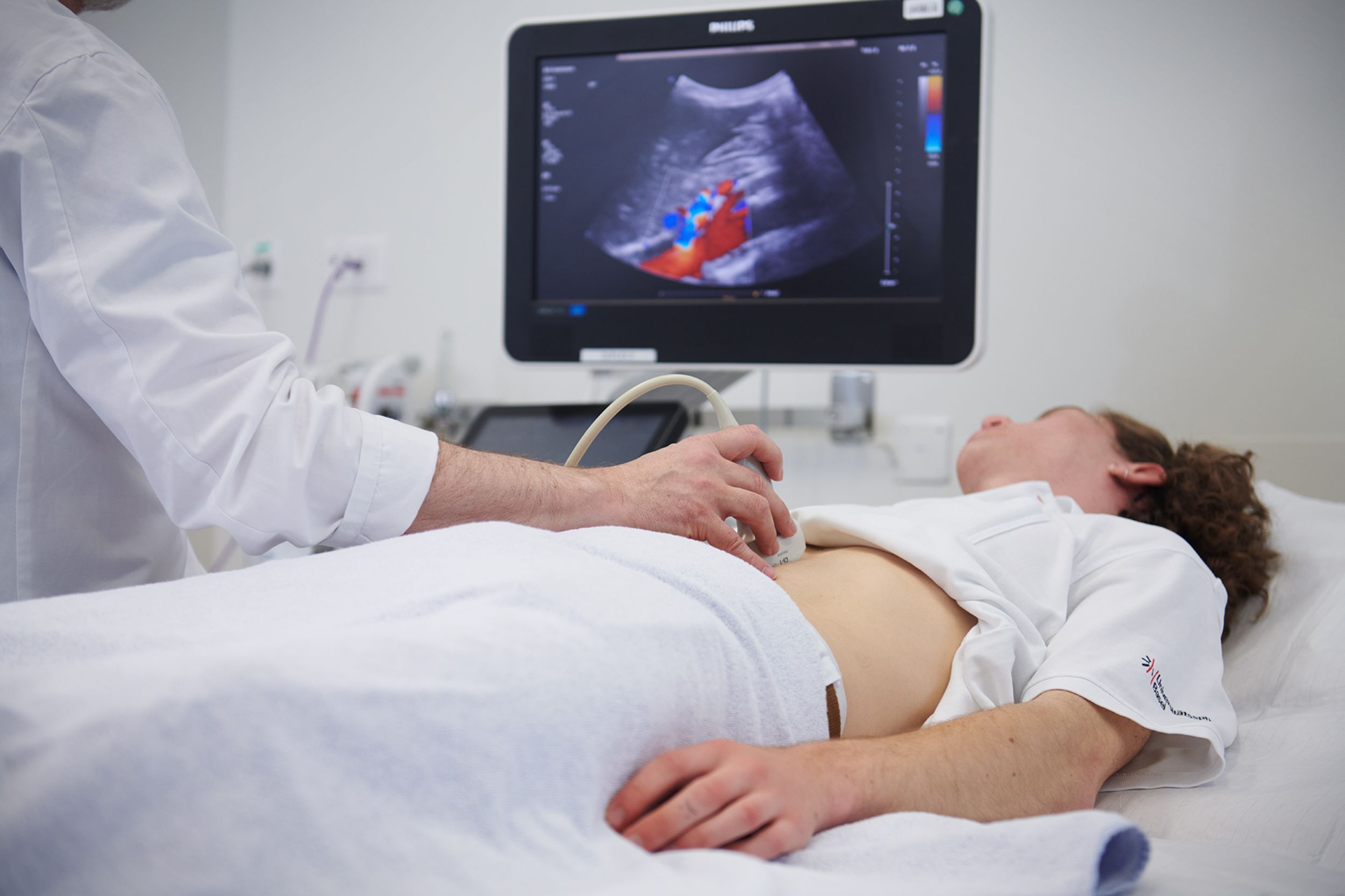
Offer
If you have circulatory disorders of the arteries, veins or small vessels (capillaries, microcirculation, lymph), we will treat you as an outpatient in our consultation hours or as an inpatient on our wards.
Our specialty is the ultrasound examination of arteries and veins as a basis for individual treatment planning. Early detection and prevention are important to us.
We offer the following examinations, among others:
- Duplex sonography
- Doppler pressure measurement
- oscillography
- Treadmill exercise
- Capillary microscopy
- Percutaneous transluminal angioplasty (PTA)
- Phlebology
Varicose veins and spider veins
Varicose veins and spider veins - what are they? What are the risk factors?
Varicose veins are a disease of the leg veins. The leg veins can protrude or become tortuous. This can be a sign of venous insufficiency, known as chronic venous insufficiency. Varicose veins develop when the leg veins can only transport the blood in the superficial venous system to the heart to a limited extent, for example if the venous valves are not functioning properly.
Spider veins are tiny, visible veins running through the skin which, unlike varicose veins, are not or only barely palpable.
The main risk factor for the appearance of spider veins and varicose veins is increasing age. Other risk factors are obesity, a sedentary job and a family history or genetic predisposition. The risk also increases with the number of pregnancies. A previous venous thrombosis also favors the development of varicose veins.
What symptoms can occur?
Varicose veins are not always associated with symptoms.
There may be heavy, tired and even aching legs. Itching and swelling of the ankles that increases towards the evening can also occur.
Varicose veins can also tend to become inflamed: This results in painful redness and hardening in the area of a varicose vein.
Only in the advanced stages of chronic venous insufficiency can skin changes occur, including an open leg, i.e. a poorly healing wound on the lower leg or foot, known as a leg ulcer. Varicose vein treatment is then essential at the latest.
Our offer for varicose veins and spider veins
If you have spider veins, varicose veins and/or venous symptoms (as described above), you can register directly for our vein consultation. The consultation is covered by your basic health insurance (excluding deductible and excess). Registration for a vein consultation
After a detailed questioning about your health, a diagnosis will be made during this initial consultation. We then discuss the next steps together. Every person is individual. An individual consultation and approach are therefore extremely important to us.
- The angiology department at the University Hospital Basel offers sclerotherapy for spider veins and smaller veins as a therapeutic option. Very fine needles are used to inject the sclerosing agent, which irritates the vein wall and leads to the closure and eventual disappearance of the spider veins.
- We also offer laser therapy for the large truncal veins, which is carried out using a minimally invasive procedure. Laser energy is used to close the diseased vein via a catheter. This method of vein treatment is the therapy of choice today.
- Depending on the extent of the varicose veins, it can also be supplemented by a so-called mini-phlebectomy of the side branches, in which the tortuous, visible or palpable veins on the legs can be hooked out through very small incisions in the skin.
These procedures are carried out on an outpatient basis under local anesthetic and take around 60 minutes (sclerotherapy) to 120 minutes (laser therapy with mini phlebectomy if necessary).
Registration and contact
Your doctor can refer you to the Angiology Department at the University Hospital Basel, or you can register directly online: Online registration for the vein consultation.
If you cannot find a suitable appointment in the OneDoc online registration, please contact the angiology department of the University Hospital directly by e-mail: angioanmeldung@usb.ch.
